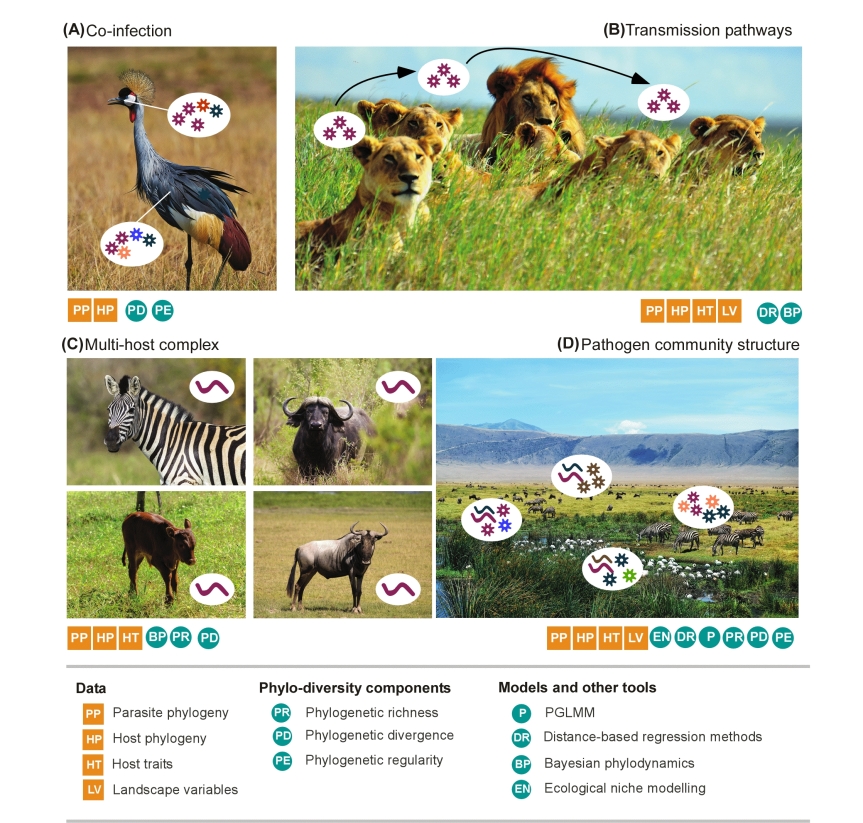Curious about how phylogenetic community ecology can be applied to understand infectious disease? Our review is out now in Biological Reviews: http://onlinelibrary.wiley.com/doi/10.1111/brv.12380/full
This all started thanks to a small grant from the University of Minnesota Institute on the Environment enabling me to get a great group of people together to talk disease ecology and phylogenetics. It’s now great to see it out there! It was also great working with a graphic designer to help get the figures that bit more appealing. I can highly recommend Elissa (http://myvisualvoice.com/) – I learned a lot from her about getting the visual aspects of figures more refined. Figure 1 is below….

Fig. 1. Conceptual schema illustrating how an eco-phylogenetic framework can be applied to understand infectious disease dynamics. The example system used is the Ngoronogoro Crater (Tanzania), across scales: (A) within host; (B) among hosts of the same species; (C) multi-host complex; and (D) landscape scale. Colour-coded and lettered symbols below each panel indicate what data (squares) and statistical tools (circles) could be used to address each challenge (see Section I.2 for model and other tool details). White ovals contain hypothetical parasite communities within a host and different parasite colours and shapes (nematodes or viruses) represent different parasite species or genotypes. PGLMM: phylogenetic generalised linear mixed model.
